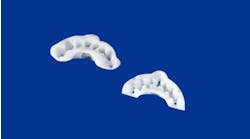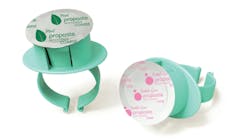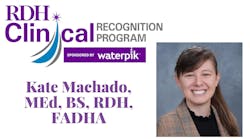In the face of climate change, it’s crucial for all sectors, including dentistry, to understand the impact of greenhouse gases and the greenhouse effect. Human activities have significantly increased the levels of greenhouse gases, intensifying global warming and its detrimental consequences.
The dental sector contributes to this environmental challenge and exacerbates climate change. Dental professionals have a pivotal role in mitigating these impacts and by integrating sustainability into their practices, dental pros can help protect the environment and public health, underscoring the profession's commitment to healthy communities.
Understanding greenhouse gases and the greenhouse effect
Greenhouse gases, including carbon dioxide, methane, nitrous oxide, and fluorinated gases, are essential for life on Earth, trapping heat in the atmosphere to keep the planet warm. However, excessive emissions from fossil fuel combustion, agriculture, deforestation, and industrial processes have heightened their concentration, exacerbating global warming. The greenhouse effect, a natural phenomenon where these gases retain heat in the atmosphere, has become more intense, leading to significant environmental and health challenges.
Why this matters
The repercussions of climate change are vast, affecting everything from global temperatures to weather patterns and ecosystems. Melting glaciers, rising sea levels, more frequent and intense weather events, ocean acidification, and biodiversity loss only scratch the surface of these impacts. These changes lead to health risks that often disproportionately affect the most vulnerable populations.
The dental sector’s contribution
The dental industry plays a role in this complex issue. Worldwide, the health-care industry is estimated to produce two gigaton of CO2-equivalent greenhouse gas emissions.1 Dentistry is responsible for 3% of health care’s carbon footprint, contributing to greenhouse gas emissions through waste production, transportation, chemical use, energy consumption, and water usage.2
These activities add to the environmental burden and pose risks to human health, including oral health. For instance, increased exposure to pollutants is linked to higher risks of oral cancer, early childhood caries, and periodontitis.3,4,5
What can dental professionals do?
Understanding the broader impact of our practices is crucial. This means recognizing how the dental sector contributes to environmental issues and identifying ways to mitigate these impacts. Strategies include:
Reducing waste: Implementing recycling programs and reducing the use of single-use plastics and materials can significantly lower the dental's environmental footprint. You can start by putting a recycling bin in the break room.
Optimizing transportation: Encouraging the use of public transportation, carpooling, and energy-efficient vehicles by patients and staff can reduce emissions associated with dental visits.
Managing chemicals wisely: Proper disposal and reduction of hazardous chemicals can prevent environmental contamination and protect water sources.
Conserving energy and water: Adopting energy-efficient practices and fixtures in dental offices can minimize energy consumption and the strain on water resources. This can be as simple as advising patients to turn off the water when they brush.
Tying it back to dentistry
Beyond these practical steps, dental professionals have a unique opportunity to advocate for and embody principles of sustainability and environmental justice. By fostering a culture of awareness and responsibility, we can minimize our environmental impact and support the health and well-being of our communities. In doing so, dentistry can contribute to a more sustainable and equitable world, where both our patients and the planet can thrive.
References
1. Pichler PP, Jaccard IS, Weisz U, Weisz H. International comparison of health care carbon footprints. Environ Res Letters. 2019;14(6):064004. doi:10.1088/1748-9326/ab19e1
2. Eckelman M J, Sherman J. Environmental impacts of the US health care system and effects on public health. PLoS One. June 9, 2016. https://journals.plos.org/plosone/article?id=10.1371/journal.pone.0157014
3. Chu YH, Kao SW, Tantoh DM, Ko PC, Lan SJ, Liaw YP. Association between fine particulate matter and oral cancer among Taiwanese men. J Investig Med. 2019;67(1):34-38. doi:10.1136/jim-2016-000263
4. Folayan MO, El Tantawi M, Schroth RJ, et al. Association between environmental health, ecosystem vitality, and early childhood caries. Front Pediatr. 2020;8(5):196. doi:10.3389/fped.2020.00196
5. Lin H-J, Tsai SC-S, Lin FC-F, Hsu Y-C, Chen S-W, Chou R-H, Lin C-L, Hsu CY, Chang K-H. Prolonged exposure to air pollution increases periodontal disease risk: a nationwide, population-based, cohort study. Atmosphere. 2021; 12(12):1668. doi:10.3390/atmos12121668
Brittany Cox, BS, RDH, PG Dip., MADHA, MAADH, is a dental hygienist with a decade of experience and an MA in oral health promotion from O’Hehir University. She is dedicated to enhancing oral health and community well-being. Raising a family rooted in regenerative practices and a homesteading lifestyle, she aspires to live sustainably and pass these values to future generations. As a prominent opinion leader in sustainable dentistry, she unites her passion for sustainability and oral health, contributing significantly to the field.








